Discover the Power of
Healing Foods! Newsletter
Issue #007
Wed 17 Apr 2013
What are Flavonoids and
How Can We Benefit from Them?
Welcome to the 7th issue of Discover The Power of Healing Foods! newsletter.
In our previous issues we discussed several carotenoid antioxidants and where we can find them. If you've
missed those issues catch up here.
In this issue we will discuss:
- Why Do We Need Flavonoids and Other Phytonutrients?
Why Do We Need Flavonoids and
Other Phytonutrients?
The one million dollar question is: What makes us sick? What makes us age? Is it always a virus or a bug
invading our bodies and attacking our defenses? Sometimes it is. But even when that happens, usually our own
defenses should be able to handle the assault. But often we get bombarded from every angle, and our immune
system gets overwhelmed and can't cope.
This is where the phytonutrients come in. They are a
huge family of chemicals or nutrients found in plants that, apart from protecting the plants themselves from
their own enemies, they protects us, too - not from bugs but from forces that wreak havoc in humans: free
radicals.
We've discussed before the ongoing battle between free radicals and antioxidants. For
those of you who haven't read that newsletter, I'll explain it briefly here.
What's All the Fuss About Free Radicals?
Every day, your body is under attack by harmful substances known as free radicals. These are oxygen
molecules that, due to pollution, sunlight and everyday wear and tear, have each lost an electron. As they
attempt to regain their missing electrons, they careen through your body, stealing electrons wherever they
can.
The molecular victims of these raids are your cells themselves - and sometimes even your
DNA. Unless this chain is stopped, the result is huge numbers of damaged molecules and, over time,
irreparable damage and disease.
Take cholesterol, for example (see illustration below). Normal cholesterol is a benign, helpful substance. In fact, we cannot live without cholesterol. But when cholesterol molecules are damaged by free radicals, they begin sticking to the lining of artery walls, causing hardened arteries and heart disease.
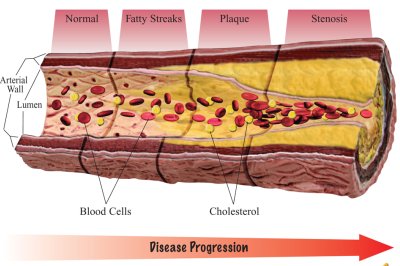
Here is another example: When free radicals attack
molecules in your body's DNA - the genetic blueprint that tells your
cells how to function - that blueprint is damaged. This can spark
dangerous cell changes that lead to cancer and other diseases. Even
aging, many scientists believe, is caused by free-radical damage.
Antioxidants Save Our Lives
The phytonutrients in plants, using their antioxidant powers, can quite literally save your life.
Essentially, they step between the marauding free radicals and your body cells, offering up their own
electrons. When free radicals grab these "free" electrons, they become stable again and do no further
damage. Most phytonutrients are potent antioxidants.
In previous newsletters we've discussed a
class of antioxidants called carotenoids and the amazing
things they do to protect us from free radical damage. Now we'll consider another one: flavonoids.
What are Flavonoids?
Like carotenoids, flavonoids are molecules in food that add colour - specifically reds, yellow, blues and
shades of brown - to fruits and vegetables. As with carotenoids, these colours often are masked by
chlorophyll in plants.
Researchers suspect these flavonoids to be responsible, for example, for
what has become known as "the French paradox" - the fact that although French people seem to love all
those foods that contribute to heart disease, such as butter, cream and cheese, they die of heart disease 2
1/2 times less often than other people in western countries. Experts suspect that flavonoids present in red
wine are responsible for the protection against oxidative damage from LDL cholesterol.
Health Benefits of Flavonoids
Some flavonoids make the lining of blood vessels more supple, lowering blood pressure and protecting
against a build-up of heart-threatening plaque - in one study grape juice and dark chocolate had this
effect.
Flavonoids also act like Teflon coating for the millions tiny disks in your blood called
platelets. They keep the platelets from clumping together in the bloodstream and forming clots, which helps
prevent heart attacks and stroke.
A recent Harvard Medical School lab study has found that one
magical flavonoid found in wine and grapes, resveratrol, also lowers blood sugar levels and
boosts liver function. In fact, in a group of lucky mice, it increased longevity by 31%. And, in one recent
University of Virginia lab study, resveratrol - found in grape skins, raspberries, mulberries and peanuts -
literally starved cancer cells by interfering with a protein called nuclear factor-kappa B that helps feed
them.
In one Dutch study that examined the eating patterns of 805 men ages 65 to 84, researchers
found that those who got the least flavonoids in their diets were 32% more likely to die from heart attack
than those who ate the most. It didn't take many flavonoids to get the benefits. The high-flavonoid group
had the equivalent of 4 cups of black tea, 1/2 cup apple, and 1/8 cup of onions a
day.
When it comes to cancer prevention, flavonoids may help out by influencing
cell-signalling pathways - the way cells turn genes on and off in order to perform thousands of everyday
maintenance activities.
Flavonoids may help turn on genes that stop cancer cells from dividing
or invading healthy tissues, or even may help activate genes that make cancer cells commit suicide, say
experts from the Linus Pauling Research Institute at Oregon State University in Corvallis.
In a
recent study at the University of California, Los Angeles, those prostate-cancer survivors who drank 8
ounces of pomegranate juice daily increased by nearly four times the period during which their levels
of prostate-specific antigens, a cancer bio-marker, stayed stable. The study surprised even the researchers,
who say the combination of flavonoids, anti-inflammatory compounds and antioxidants in pomegranate juice may
be responsible.
You may be interested to know that Cornell University scientists found that
cocoa has twice as many flavonoids as red wine and three times more than a cup of green tea. The
results surprised the researchers, who expected green tea to win.
But it's not a good idea to
favour one type of flavonoids over another. It's much better to adopt a strategy that gives you the widest
variety of flavonoids possible. Dr Chang Y. Lee, PhD, professor of food science and technology at Cornell
University suggests the following: "Personally, I would drink hot cocoa in the morning, green tea in the
afternoon and a glass of red wine in the evening." I don't know about you, but I quite like the sound of
that!
With over 4,000 flavonoid compounds that have been classified so far, you might wonder
which ones are the most effective and where you can find them.
Where Do You Find Flavonoids?
Like carotenoids, flavonoids are primarily found in all brightly coloured fruits and vegetables. Even if
you don't know what flavonoids are, you are almost certainly already eating them. The question is whether
you're eating enough of the right ones to stay healthy.
Flavonoids are found in a huge
variety of edible plants, fruits and vegetables, but although they are so common, most of us are likely to
be flavonoid depleted, thanks to changing eating habits.
We're eating less than half the amount
of fresh fruit we did a century ago, and more processed fruit. The highest concentrations of
flavonoids in fruits and vegetables tend to be found in the skin and seeds and industrial processing
methods almost invariably discard these parts. Even at home, you might think you're eating plenty of fruit
with your apple pie, but those apples are not quite the same as in their original state.
Also
different flavonoids work in different tissues of the body. For example, some can enter the brain, whereas
others appear to concentrate in the lining of blood vessels. So different flavonoids can be used to target
different tissues.
The secret is to get to know some of these powerful antioxidants and see where
you can find them.
Just because I have to start somewhere, I'll begin with quercetin here and
discuss a few more in the next issues of this newsletter.
Quercetin - A Powerful Flavonoid

Quercetin is consistently the most active of the flavonoids in experimental studies and many medicinal
plants owe much of their activity to their high quercetin content. One of the best dietary sources of
quercetin is onions.
Quercetin has a versatile anti-disease potential. According to
Dr.Terrance Leighton, Ph.D., professor of biochemistry and molecular biology at the University of California
at Berkley, quercetin is one of the most potent anticancer agents ever discovered. It inactivates
several cancer-causing agents, preventing damage to cell DNA, and inhibits enzymes that spur tumour growth.
At the prestigious Mayo Clinic in the US, research has been conducted into quercetin to help
treat and prevent prostate cancer. Their laboratory results showed quercetin blocks the androgen
activity in androgen-responsive human prostate cancer cells. By blocking the androgen activity the growth of
the prostate cancer cells can be prevented or stopped.
Quercetin is also anti-inflammatory,
antibacterial, anti-fungal and anti-viral. It works through the immune system to dampen allergic
responses (by inhibiting release of histamine from cells), and thus appears to help combat allergies such as
hay fever, asthma and eczema. This power, plus its anti-inflammatory activity may account for onion's
reputed therapeutic impact against asthma and allergies. Its anti-viral activity makes it also very useful
in combating colds and other infections.
Quercetin is anti-thrombotic, helping block
formation of blood clots. As an antioxidant, it absorbs oxygen free radicals and helps keep fat from
becoming oxidized. Quercetin is one of the best cardio-protective substances yet discovered.
Quercetin can effectively delay the onset of cataracts
in people with diabetes, enhance insulin secretion and protect the pancreatic cells responsible for
insulin secretion from free radical damage.
Quite a lot of benefits for such a humble vegetable, don't you think?
Major Sources of Quercetin:
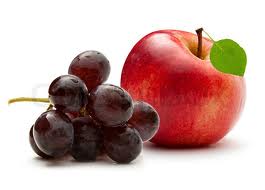
- Yellow and red onions (not white onions)
- Shallots
- Apples
- Red grapes (not white grapes)
- Broccoli
- Berries
- Yellow squash
Note: You'll be pleased to know that quercetin is not destroyed by cooking or freezing.
Quercetin is probably the main reason for the formidable therapeutic powers of onions. Some onions are so full of quercetin that the compound accounts for up to 10% of their dry weight.
Read my article on the healing power of
onions
and to get some ideas on how to include them in your diet.
Quercetin is found mostly on or near the skin of foods, so if you're in the habit of peeling your apples, you might consider a quercetin supplement.
It's much better to take a supplement that contains a combination of flavonoids and carotenoids rather than one single phytonutrient, as they're much more powerful when working together.
I particularly like this supplement, Replete 2. It's a very potent and powerful phyto-antioxidant nutrient formula, containing high levels of flavonoids and carotenoids. Ingredients: Quercetin, broccoli powder, green tea extract, grape seed extract, ginger extract, blueberry extract, bilberry extract, curcumin extract, lycopene, lutein (providing zeaxanthin), beta carotene.
Coming Next...
I hope you have enjoyed reading this newsletter. So far we've discussed the many ways flavonoids can
protect you from disease and particularly how quercetin can have a huge impact on your health. Next time,
I'll discuss another important group of flavonoids, procyanidins, what they are, how they can benefit
us and where to find them.
Look out for the next newsletter, you don't want to miss
it!
Also, if this newsletter has raised some questions in your mind about antioxidants or you'd
like specific information on them, don't hesitate to get in touch with me.
The next issue will be
sent out on Wed 15th May 2013.
Until Next Time,
Aurora Raisbeck
P.S.
If you liked this newsletter, please do a friend and me a big favour and "pay it forward".
If a friend did forward this to you and you like what you read, please subscribe by visiting Discover the
Power of Healing Foods!
Comments? Ideas? Feedback? I'd love to hear from you. Just use the
Contact Me form and let me know what you think.
Or fill in the form below to help me improve
it.
Go to Foods' Healing Power Homepage from Discover the Benefits of Lycopene
Search for information on this site:
Receive Discover the Power of Healing Foods! Free
Newsletter
The Antioxidants Series:
Issue #3 - Free Radicals and Antioxidants - The Never Ending War
Issue #4 - Beta Carotene - A Powerful Ally in our Fight Against Free Radicals
Issue #5 - Lutein and Zeaxanthin - The Eye Protectors
Issue #6 - Discover the Benefits of Lycopene - Your Best Defence Against Cancer
Issue #7 - What are Flavonoids and
How Can We
Benefit from Them?
Issue #8 - Harness the Power of Anthocyanins -
Your Purple Defence
Issue #9 - Hesperidin and Other
Citrus Flavonoids - Your Cancer Fighters
Health Benefits of Blueberries -
Are They Exaggerated?
Most Popular
Pages:
The Best "Fish Oil" Supplement is Not Made from Fish
Bananas for High Blood
Pressure

Elimination Diet for IBS and Other Food
Sensitivities
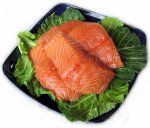
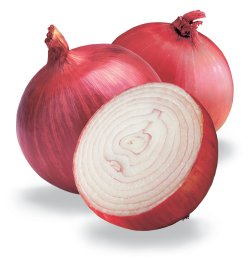





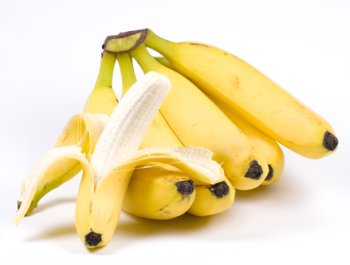
New! Comments
Have your say about what you just read! Leave me a comment in the box below.